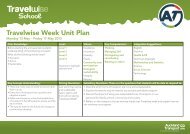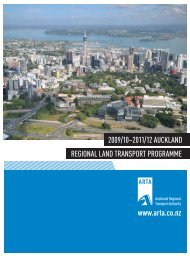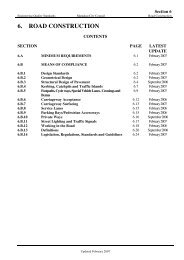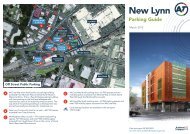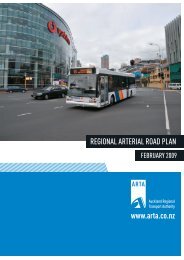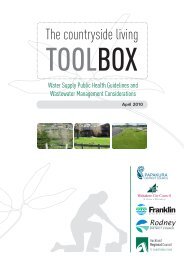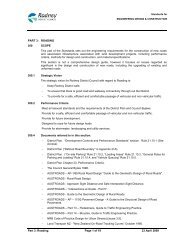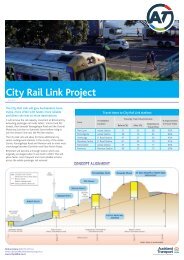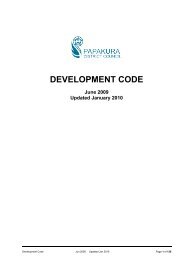ARTA Annual Report 2009 - Auckland Transport
ARTA Annual Report 2009 - Auckland Transport
ARTA Annual Report 2009 - Auckland Transport
You also want an ePaper? Increase the reach of your titles
YUMPU automatically turns print PDFs into web optimized ePapers that Google loves.
ii)<br />
Operating leases – Land<br />
The operating leases on land are donated assets. They are recognised in the accounts at fair value and<br />
amortised over the life of the underlying leases.<br />
Amortisation of Intangible Assets<br />
The carrying value of an intangible asset with a finite life is amortised on a straight line basis over its<br />
useful life.<br />
Amortisation begins when the asset is available for use and ceases at the date the asset is derecognised.<br />
The amortisation charge for each period is recognised in the income statement.<br />
The useful lives and associated amortisation rate of major classes of intangible assets have been estimated<br />
as follows:<br />
Computer software 3 years (33.3%)<br />
Operational leases 63 years (1.6%)<br />
Impairment of Non-Financial Assets<br />
Assets that are subject to amortisation or depreciation are reviewed for impairment whenever events or<br />
changes in circumstances indicate that the carrying amount may not be recoverable or at each balance<br />
sheet date. An impairment loss is recognised for the amount by which the asset’s carrying amount exceeds<br />
its recoverable amount. The recoverable amount is the higher of an asset’s fair value less costs to sell and<br />
value in use. Where the future economic benefits of an asset are not primarily dependent on the asset’s<br />
ability to generate net cash inflows, and where <strong>ARTA</strong> would, if deprived of the asset, replace its remaining<br />
future economic benefits, value in use is determined as the depreciated replacement cost of the asset.<br />
For the purposes of assessing impairment, assets are grouped at the lowest levels for which there are<br />
separately identifiable cash flows.<br />
If an asset’s carrying amount exceeds its recoverable amount, the asset is impaired and the carrying<br />
amount is written down to the recoverable amount. The total impairment loss is recognised in the<br />
income statement.<br />
Assets that have an indefinite useful life are not subject to amortisation and are tested annually<br />
for impairment.<br />
90



